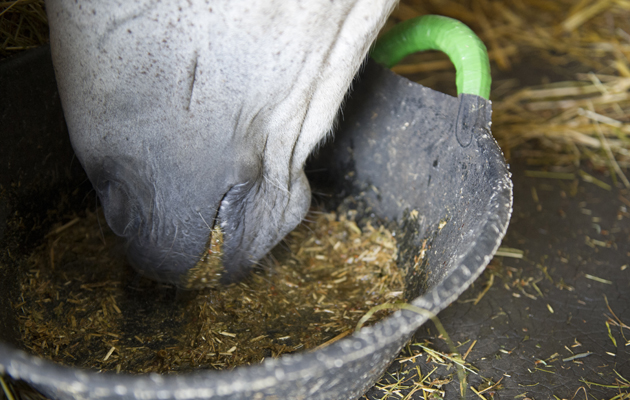A vet from a practice which has to put down “tens” of horses every year due to obesity believes owners’ attitudes to excess weight have to change.
Joe Mackinder told H&H the figure of 30 put to sleep annually by his Yorkshire-based Rainbow Equine Hospital, which he mentioned at a veterinary talk he gave this month, was a “slight shock tactic”.
“But it’s getting to the point some vets are – not exactly desperate, but just thinking ‘how do we get across to people that having an overweight pony isn’t something to be proud of?’” he said.
“Ours is a big practice, of 17 vets, and if you add it up, we might have weeks where we put down five or six, when the spring grass is coming through, then none for a month.
“But we all see far too many overweight horses with laminitis, and we put down a lot of horses through acute or chronic laminitis.”
Mr Mackinder also mentioned overweight equines who suffer injuries to the deep digital flexor tendon or collateral ligaments, for example.
“You do wonder that if they were lighter, would there have been less pressure on these structures,” he said.
“It’s difficult to quantify because we see those injuries in lighter horses too. But the main point of my talk was equine metabolic syndrome (EMS) as the main cause of laminitis.
“If your horse is overweight and has EMS and gets laminitis, it can be very hard to get him back.”
Mr Mackinder believes a contributing factor is a “not entirely misplaced pride in ensuring your horse looks well”.
“People don’t like to see ribby or skinny horses,” he added. “As a rule, you’ll get much more criticism on a livery yard if you can see ribs than if your horse is obese; people have got used to it.
“Of course no one wants to see emaciated horses, and people want them to look well, but, and this could be controversial, no horse ever died from being a bit lean.”
The vet warned that it is “not just the classic Shetland companions” who are at risk; one of his patients was a competition horse who developed laminitis after a short spell of box rest while on his usual diet.
Continues below…

Warning as well-meaning owners ‘make horses’ lives a misery’
Over-rugging and rider and horse obesity are among the issues affecting horses in this country, World Horse Welfare has warned

The rider weight debate and why it’s not fat-shaming: H&H responds
H&H responds to the latest news on a big issue for the equestrian industry

Excess rider weight can cause lameness
Results of a landmark pilot study show the negative effect heavier riders can have on horse performance
He also reminded owners that horses “in the wild, although I don’t like that term” would come out of winter a bit thin, as food has been scarce and conditions hard.
“They’re very good at putting weight back on in spring but we tend to feed them and rug them all winter so in many cases, they come out of it fat – and get fatter when the grass comes through.
“They get progressively fatter and fatter; that’s the problem.”
Mr Mackinder advised owners to talk to their vets, or feed companies, as many now have weighbridges which give a more accurate result than weigh tapes.
He added that vets can also discuss tests, such as of insulin levels, which could indicate underlying issues.
“And ask people like your trainer for honest opinions,” he added. “Can you not feel the ribs easily? Have they got a big apple bottom, or a big crest? These are the sort of things that could mean they’re a bit too fat, and you need things in place to get some weight off.”
For all the latest news analysis, competition reports, interviews, features and much more, don’t miss Horse & Hound magazine, on sale every Thursday.
In this week’s magazine, out on Thursday 19 April 2018, don’t miss our special report from the British Dressage Winter Championships, plus full analysis from the Grand National — including expert comment, pictures and more. Read our report from the dressage and showjumping World Cup finals, and in this week’s ‘vet clinic’ we discuss the facts about fitness.





